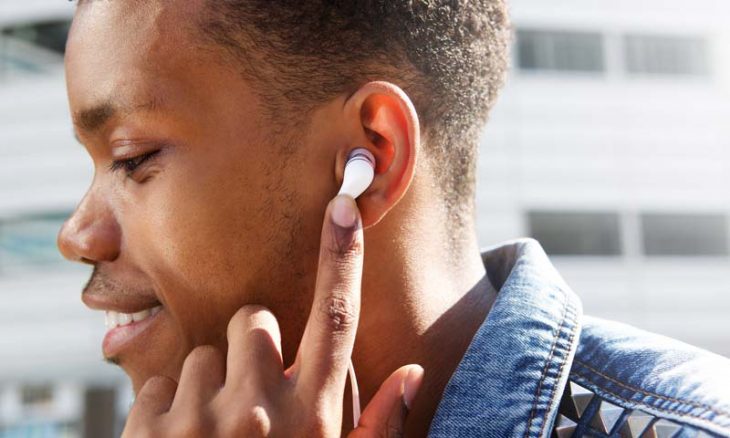
Do you like to listen to music? You’re not alone. According to Nielsen, Americans spend more than 24 hours per week listening to music.
It’s a good thing, really. After all, music is associated with a number of health benefits. For one thing, it decreases stress and elevates your mood. In some cases, it can even improve your sleep!
There’s just one thing that you want to keep in mind—loud music can be harmful. In fact, it can lead to permanent damage.
One way that you can prevent this is by using bone conduction headphones.
What makes them better than regular headphones? They bypass the outer and middle ear completely—that is, they transfer sound directly to the cochlea.
Sounds cool, right? If anything, they’ve only become more popular over the past couple of years.
Want to know how this type of technology works? If so, you’ve stumbled on the right page! We’ll be going over everything that you need to know about bone conduction below.
Keep reading to learn more!
How We Normally Perceive Sounds
To understand how bone conduction works, we first have to go over how we usually hear.
Sound waves exist as vibrations in the air. Upon reaching our eardrums, the membrane vibrates, which converts them to a different kind of vibration.
These vibrations eventually reach the cochlea, the spiral cavity of the inner ear. The electrical signals from the sounds are then transmitted to the brain through the auditory nerve.
From there, the signals are converted into meaningful sound.
How Bone Conduction Works
Bone conduction bypasses the middle ear—in other words, the eardrums are not involved in the process.
To be more specific, the bone conduction device, such as your headphones, play the role of your eardrums. They not only decode the sound waves but convert them to vibrations—ones that go to the cochlea.
The signals subsequently go to the brain, where they’re interpreted as sound.
Benefits For Those With Hearing Loss
Due to the lack of eardrum involvement, bone conduction technology is ideal for those with hearing loss.
After all, many cases of hearing loss are due to damaged eardrums (also known as conductive hearing loss). Assuming that their cochlea is healthy, most individuals would be able to hear again with bone conduction.
This type of technology, however, is not as effective for those with damaged eardrums (i.e. it has difficulty sensing vibrations). Even if the vibrations are sent to the inner ear, it might not be able to pick them up.
3 Reasons Why You Want to Use Bone Conduction Headphones
Now that we’re more familiar with the topic, let’s take a look at some of the advantages of bone conduction headphones.
1. It Increases Situational Awareness
Situational awareness refers to how aware we are of what’s happening around us.
Why is this important? It allows us to know what’s going on in our surroundings, which can help us identify potential hazards.
Sure, immersing yourself in music is great while you’re walking or driving, but it also increases your risk of accidents. After all, you’re “closing yourself off” to the outside world—you won’t be as alert as to what’s happening around you.
According to one study conducted in 2012, 70 percent of injuries caused by headphones resulted in death. Given that, it only makes sense not to close yourself off.
Still, want to listen to music? Consider bone conduction headphones. Unlike the regular type, these devices do not go over or in your ears. Instead, the transducers sit on your cheekbones.
What does this mean? Your ears remain open, which increases your situational awareness.
2. They Are More Comfortable
Headphones can be heavy and uncomfortable, especially if you’re wearing them for a long time. The same goes for earbuds—it’s not uncommon for them to irritate the ear canal after a while.
Not just that, but there’s also a possibility that they won’t stay in your ears. Surely, we’ve all had this happen to us at some point—you’re running or jogging when one of them pops out of your ears!
Well, you won’t have to worry about any of that with bone conduction headphones. For one thing, they’re a lot more comfortable. After all, they don’t come into contact with your ear canal.
Given that, they won’t pop out of your ears either. If anything, their fit is quite secure.
3. They Are Safer For Your Ears
Your ears are delicate. As mentioned earlier, they can easily be damaged by excessive vibrations caused by loud sounds. What’s more, is that there’s a chance of permanent hearing loss.
Considering that, you want to avoid listening to loud music with your headphones on. Remember, it’s not always obvious that you’ve damaged your eardrum!
In some cases, you might not even be aware that you’ve hurt your ears! Why risk it when you can opt for a safer option? That’s right—bone conduction headphones.
Given that they bypass the middle ear, they are a much safer alternative— especially if you have a habit of listening to music for long periods of time.
Enjoying Music With Bone Conduction Technology
Hopefully, that gives you a better idea as to how bone conduction devices work. As you can see, they come with many benefits—for one thing, they allow those with certain types of hearing a loss to be able to hear again!
Have you ever tried bone conduction headphones? What did you think of them? Let us know in the comments below!

